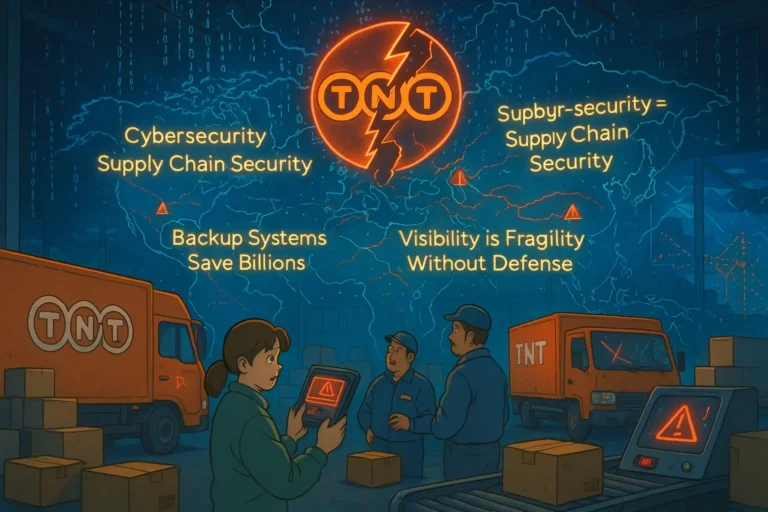
Gone are the days of manual, tedious supply chain operations. Today businesses continue to long for a more streamlined supply process. This has driven them to increasingly embrace supply chain automation and integrate technology into every inch of their operations.
In an era of digital transformation, an automated supply network is your secret weapon to staying ahead of your competition.
Introduction
Supply chain managers no longer rely on extensive human labour coupled with lots of guesswork to run their supply chain.
With the development of advanced technologies such as artificial intelligence, machine learning, and robotics, Organizations now have the power to automate their supply chain processes.
This has increased productivity, reduced costs, and improved customer satisfaction.
The article will explore the transformative power of automotive technology and how it revolutionizes supply chain operations and gives supply chains a competitive edge in the modern era.
So keep reading as we uncover the endless possibilities that supply chain automation injects into your business or organization.
What is supply chain automation?
Supply chain automation is a disruptive technique that uses technology and digital solutions to automate and optimize key supply chain management activities.
It combines cutting-edge hardware, software, and robotics to automate operations, reduce human labour, and improve operational efficiency.
At its heart, supply chain automation seeks to replace human and repetitive operations with automated technologies that can perform these functions more precisely, swiftly, and consistently.
Automated supply chain management enables firms to significantly improve productivity, cost savings, and overall performance by employing innovative technology.
Benefits of supply chain automation
The benefits of automating your supply process are numerous and far-reaching. However, we will explore some of them in this article.
**Increased productivity in the supply chain
Supply chains can drastically boost their efficiency by automating repetitive and time-consuming operations.
For example, an automated inventory management system can track stock levels, generate purchase orders, and even reorder products when inventory reaches a predetermined level.
This eliminates the need for human inventory counts while lowering the danger of stockouts or overstocking.
**Improved customer satisfaction
Customer satisfaction is yet another benefit of an automated supply process. Automated systems enable organizations to process orders more quickly and accurately, resulting in shorter lead times and better delivery performance.
Customers nowadays expect quick and dependable service; automation can assist supply chains in meeting these expectations.
**Improved supply chain visibility
Automated technology enables better decision-making, proactive problem-solving, and quick responsiveness to customer requests by providing real-time visibility into inventory levels, order progress, and shipping tracking.
Furthermore, increased visibility can aid supply chains in optimizing their inventory levels and reduce the risk of obsolete or expired stock.
**Faster Order Fulfillment
Order processing, picking, packing, and shipping are all accelerated by automation. This assists the supply chain in reducing lead times, allowing for speedier order fulfilment and increasing customer happiness and loyalty.
**Enhanced Collaboration within the supply chain
Automation enables improved communication, data sharing, and coordination across supply chain partners, resulting in smoother operations, faster decision-making, and stronger partnerships.
**Scalability and Flexibility
Scalable and adaptable automated systems can handle increasing volumes of transactions, accommodate business development, and quickly integrate with other technologies and platforms.
**Cost reduction in the supply chain
Manual supply chain management frequently necessitates a large labour force to handle operations like order processing, inventory management, and shipment.
This vast workforce is also prone to errors, which can be quite costly to the supply chain. Supply chains can minimize labour costs and enhance operational efficiency by automating certain processes.
Finally, automation eliminates the need for manual data entry, lowering the likelihood of errors and the costs associated with correcting them.
Key technologies in supply chain automation
Supply chain automation uses advanced technologies to transform manual processes into efficient and intelligent operations.
1. Artificial Intelligence (AI)
AI is critical in supply chain automation because it allows machines to execute activities that previously required human intelligence. AI-powered systems can analyze massive volumes of data, identify patterns, and make predictions or suggestions.
Supply chains, for example, use artificial intelligence to automate demand forecasting by examining past sales data, industry trends, and external factors. AI can also optimize routing and logistics by assessing traffic patterns, weather conditions, and delivery limits.
2. Machine Learning (ML)
Machine learning is the kind of AI that enables machine products to learn from data and improve performance without being explicitly programmed. ML systems may examine and learn from data to generate predictions or take action.
Supply chains, for example, can utilize machine learning algorithms to optimize inventory levels by learning from historical sales data, seasonality patterns, and demand volatility. ML can help automate quality control operations by learning to spot faults or anomalies from photos or sensor data.
3. Robotics
Another important technology in supply chain automation is robotics. Robots can do everything from choosing and packing to sorting and transporting products. Businesses can train robots to work alongside people or autonomously, depending on the use case.
Inventory managers, for example, can utilize robots to automate the picking process in a warehouse setting by autonomously walking through aisles, locating things, and depositing them in designated bins or pallets.
4. Internet of Things (IoT)
The Internet of Things is a network of physical gadgets, cars, and other items equipped with sensors, software, and connections to collect and exchange data. IoT allows real-time visibility and tracking in supply chains.
IoT sensors, for example, can be installed on items, packages, or containers to track their position, temperature, humidity, or other important parameters.
Supply chains can use real-time data to manage logistics, monitor the condition of commodities, and increase overall supply chain efficiency.
5. Cloud Computing
Cloud computing is the type of technology that enables the delivery of computing services over the Internet. In the context of supply chain automation, cloud computing provides the infrastructure and resources required to support automated systems.
Cloud-based platforms can store and handle enormous volumes of data while allowing for real-time collaboration and scalable processing capacity.
These enable supply chains to exploit advanced analytics, AI, and ML algorithms without making major upfront hardware or software investments.
======================================================================================
These are just a few of the important technologies that are driving supply chain automation. When these technologies are combined, supply chains can automate several areas of their supply chain, resulting in increased efficiency, accuracy, and agility.
Implementing supply chain automation in your business
Automating the supply chain can seem daunting, especially for businesses that have relied on manual processes for years. However, with the right approach and planning, businesses can successfully transition to automated systems.
Here are steps to consider when implementing supply chain automation
1. Assess your current processes
Evaluate your current supply chain operations to discover areas that could benefit from automation. Look for repetitive, time-consuming, or error-prone tasks. These are the areas where automation has the greatest potential.
2. Establish clear objectives for automation
Define your supply chain automation goals and objectives. Do you want to boost productivity, cut expenses, increase customer satisfaction, or above?
Setting specific objectives will aid in the direction of your automation plan and ensure alignment with your supply chain objectives.
3. Determine the best automation technology and solution
Investigate and assess several solutions that meet your needs. Scalability, integration capabilities, ease of use, and vendor support are all important considerations.
Remember it is critical to Choose a solution that can grow with your supply chain and adapt to future needs.
4. Plan for change management
Supply chain automation frequently necessitates changes to procedures, workflows, and personnel responsibilities. A change management plan must be in place to guarantee a successful transition.
To achieve buy-in, involve key stakeholders early on, provide staff training and assistance, and highlight automation’s benefits.
5. Begin small and iterate
To test the waters and gain feedback, start with a pilot project or a small-scale implementation. This method helps you to discover any problems or challenges early on and make the necessary changes before scaling up.
Remember that supply chain automation is a never-ending journey in which constant development is essential.
====================================================================================
By following these steps, businesses can effectively implement supply chain automation and unlock the benefits it brings.
Common misconceptions about supply chain automation
Despite supply chain automation’s numerous benefits and successes, some common misconceptions can hinder its adoption. Let’s address a few of these misconceptions:
1. Automation replaces human workers: One of the most common misconceptions about automation is that it would result in job loss. While automation may change certain work categories within the supply chain, it also opens new doors.
Employees can use automation to focus on more strategic jobs that demand human judgment, creativity, and problem-solving.
Furthermore, by decreasing repetitious and physically taxing activities, automation might help alleviate labour shortages and improve working conditions.
2. Automation is exclusively for huge businesses: Another common myth is that automation is only practical for large supply chains with significant resources.
Automation solutions, on the other hand, are becoming more accessible and affordable, especially for small and medium-sized enterprises.
Various automation alternatives are available, ranging from standalone systems to cloud-based platforms, allowing supply chains of all sizes to benefit from automation.
3. Automation is a one-time event: Supply chain automation is a continuous process, not a one-time event. Automation technologies constantly evolve, and supply chains must stay current to capitalize on the most recent breakthroughs.
Furthermore, automation necessitates continual monitoring, maintenance, and adjustment for best performance. Automation in the supply chain must be viewed as a journey rather than a goal.
======================================================================================
By dispelling these misconceptions, businesses can confidently embrace supply chain automation and fully realize its potential.
What to Consider when Choosing the right supply chain automation
Choosing the best automation solution for your supply chain management necessitates carefully evaluating several variables. Here are some crucial considerations to keep in mind while comparing various solutions:
1. Scalability: Ensure the solution can grow with your supply chain. Consider the number of users, transaction volumes, and overall system performance. You don’t want to outgrow the solution or invest in one that is too complex for your current requirements.
2. Integration capabilities: Examine the solution’s capacity to integrate with your current systems, such as ERP (Enterprise Resource Planning) systems, warehouse management systems, or e-commerce platforms. Integration is essential for ensuring smooth data flow and process automation.
3. User-friendliness: Think about how easy the solution is to use. Ideally, it should be intuitive and easy to learn.
4. Support and Maintenance: Consider the automation provider’s support and maintenance policy. Choose automation that provides dependable support and maintenance services to ensure the system runs well and quickly resolves any difficulties.
5. Cost: Look for a solution that offers good value for money and fits within your budget. However, it is important to note that the cheapest answer is not usually the best. Consider the solution’s long-term benefits and the prospective return on investment (ROI).
FAQs on Supply Chain Automation
Q1: Can supply chain automation be tailored to unique requirements?
Yes, automation solutions may be tailored to each supply chain’s needs, allowing for modification and interaction with current systems and procedures.
Q2: Is automation appropriate for all sizes of supply chains?
Yes, supply chains of all kinds, from small to large, may profit from automation. Depending on the scope and complexity of the supply chain process, the level of automation and specific technology used may vary.
Q3: Does supply chain automation necessitate a big initial investment?
While you may incur some upfront expenses when implementing supply chain automation, the long-term benefits, such as cost savings, greater efficiency, and competitive advantage, frequently surpass the initial investment.
Q4: How can supply chain automation assist organizations in adapting to changing market demands?
Automating a supply network enables firms to adapt to market dynamics, scale operations, and respond swiftly to client demands through optimized processes and real-time analytics.
Conclusion
Supply chain automation’s disruptive impact enables organizations to optimize inventory management, accelerate order processing, reduce errors, and enable real-time insight across the supply chain.
Furthermore, automation enables supply chains to make data-driven decisions, respond quickly to market swings, capitalize on opportunities, and satisfy consumers’ ever-changing wants.
Businesses that capitalize on the benefits of supply chain automation can pave the path for long-term growth, better profitability, and a strong place in the industry landscape.

Obinabo Tochukwu Tabansi is a supply chain digital writer (Content writer & Ghostwriter) helping professionals and business owners across Africa learn from real-world supply chain wins and setbacks and apply proven strategies to their own operations. He also crafts social content for logistics and supply chain companies, turning their solutions and insights into engaging posts that drive visibility and trust.








Incredible, well done